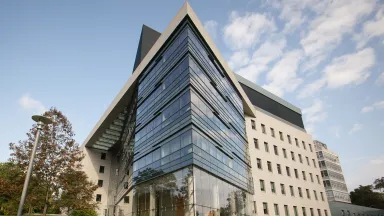Headache Center
Migraine, tension-type headache, cluster headache—no matter what the type, they can all be very debilitating. Your head throbs. You feel pain in your neck, back and shoulders. You are nauseous and sensitive to lights, noises and smells. You may have disturbances in your vision or sensation. It can be difficult to work, go to school—or even enjoy life.
The Montefiore Headache Center can help.
A leader in the field, the Montefiore Headache Center is the first center in the world focused exclusively on the diagnosis and treatment of headache disorders and/or facial pain in adults and adolescents.
Our mission of excellence in the diagnosis and treatment of headache disorders advancing current knowledge of headache through research, and moving scientific advances into clinical practice has remained a key focus for more than 60 years. This long-term dedication continues to fuel our focus on providing focused, high-quality, team-centered care.
A Comprehensive, Personalized Approach to Treatment
Our respected and high skilled interdisciplinary team is completely devoted to headache research, diagnosis, and treatment. We use a unique team approach to work with patients and gather the information needed to develop a personalized treatment plan focused on providing support and tools to manage headaches successfully—and permanently.
During your initial visit, a physician will interview you about your headaches, take a complete medical and health history, conduct a physical and neurological examination, and discuss how headaches affect your life. Based on the results, your physician may recommend additional tests and/or an interview with our clinical health psychologist—many with severe headaches face stress, depression and anxiety that can contribute to their condition.
Your physician will then combine all information to develop an individualized, comprehensive, multidisciplinary headache management plan specifically for you.
Learn More About the Montefiore Headache Center
Our wide range of services and treatments includes drug therapy (including acute and preventive medications), biofeedback, cognitive behavioral therapy and lifestyle modifications to identify and avoid common triggers. We also offer Botox injections and peripheral nerve blocks to treat migraine and other headache disorders.
Please feel free to contact us for additional information. New patients are encouraged to prepare for an initial visit and make use of the directions offered on this site.
We look forward to putting you one step closer to a headache-free life.







